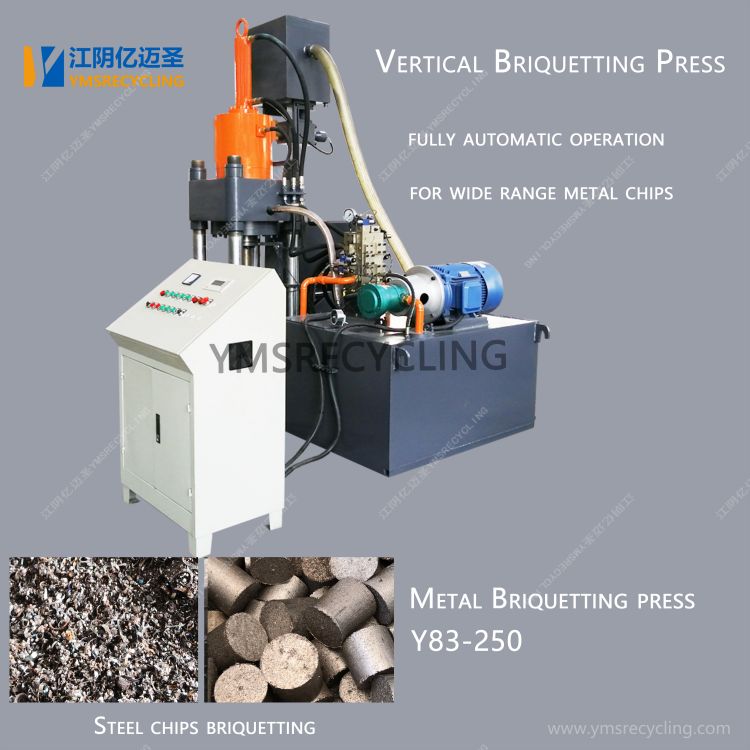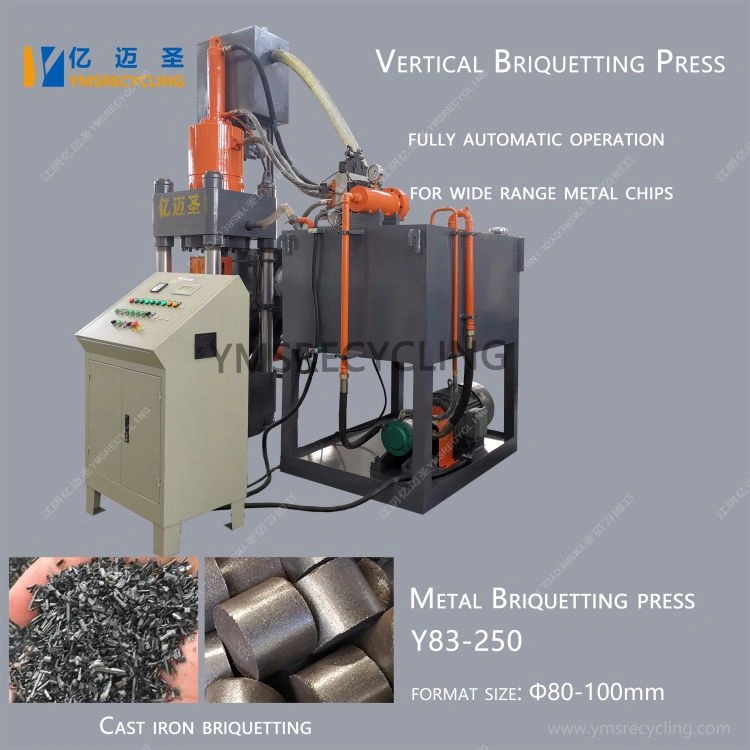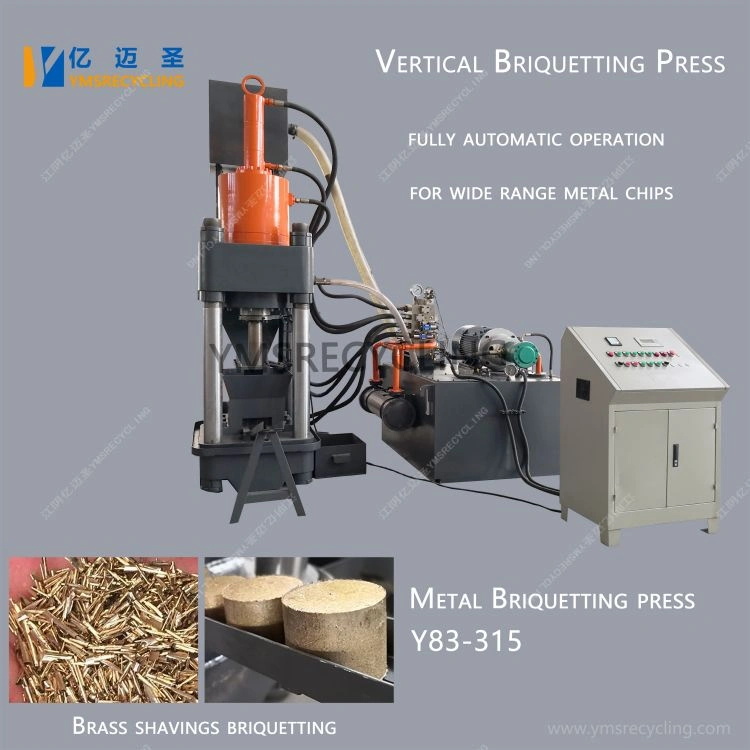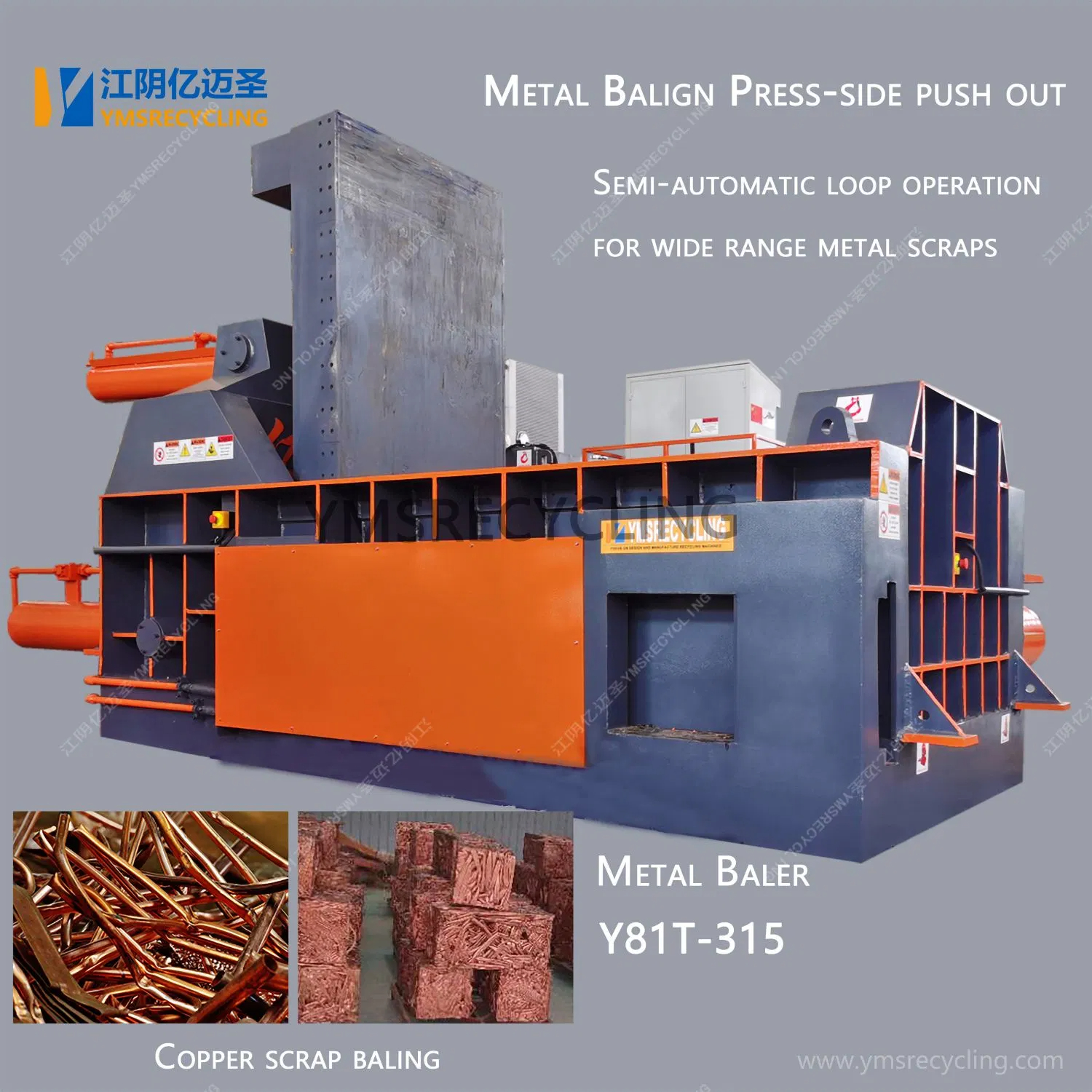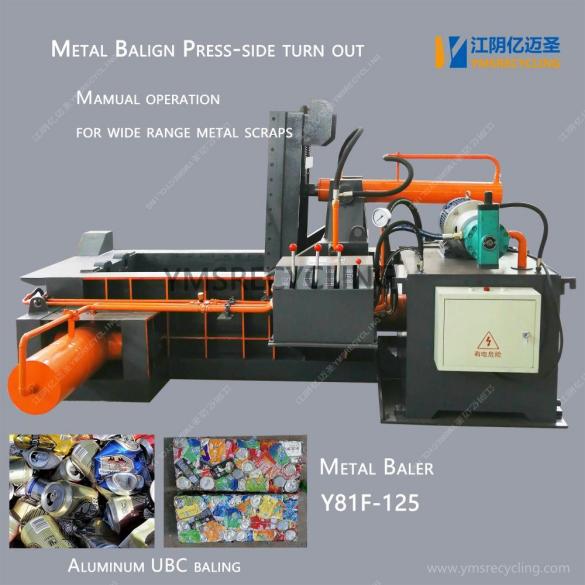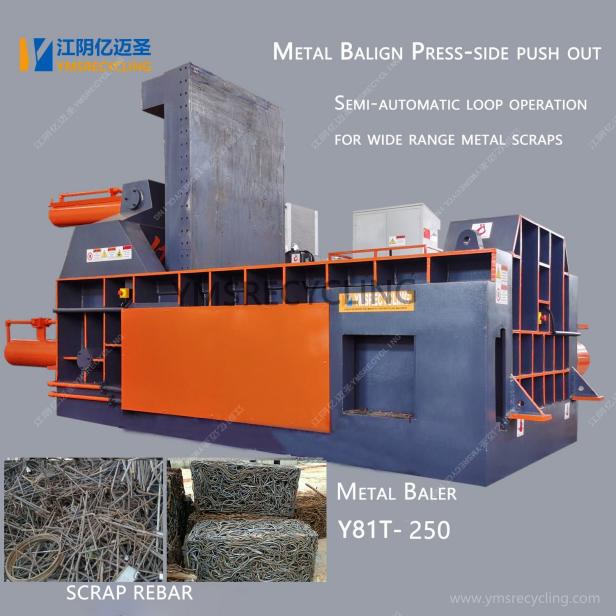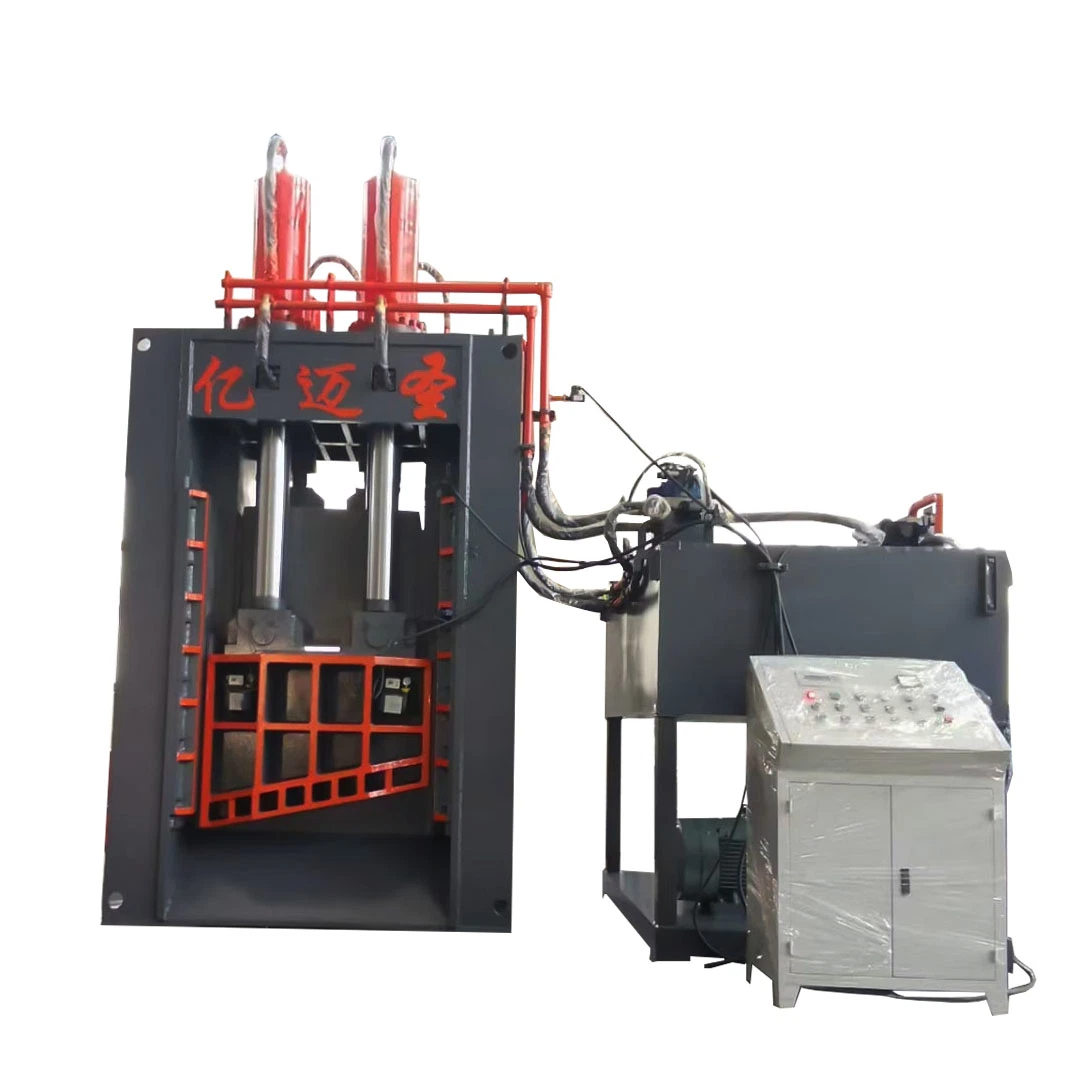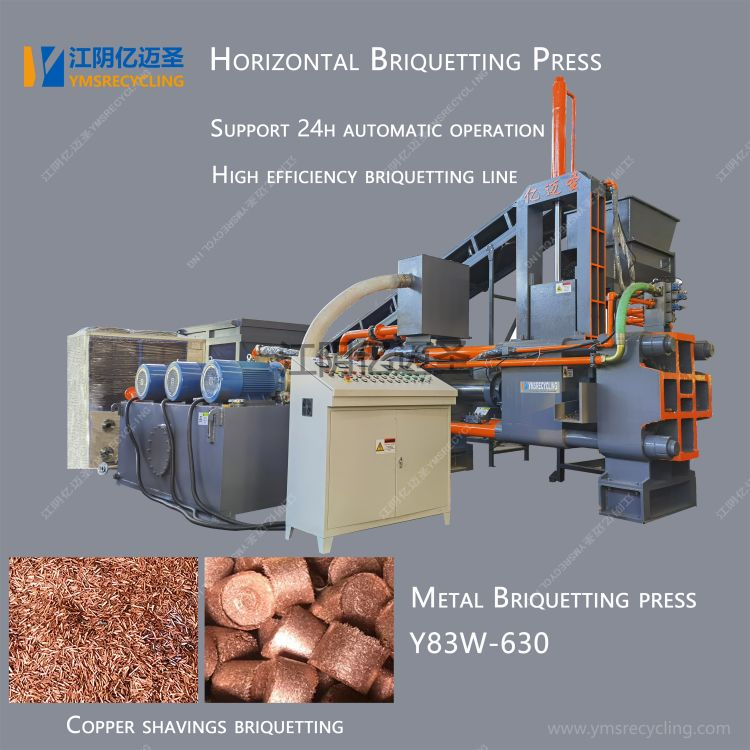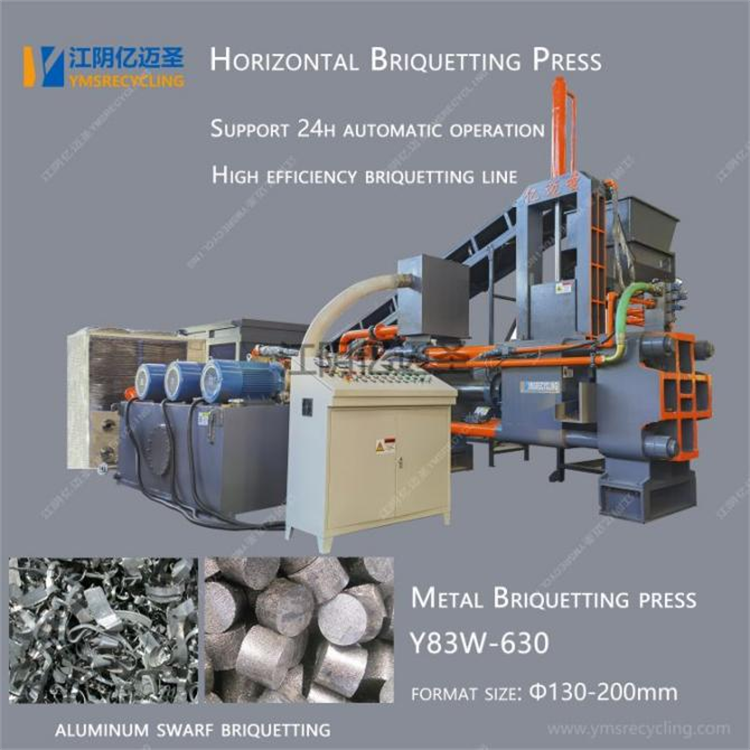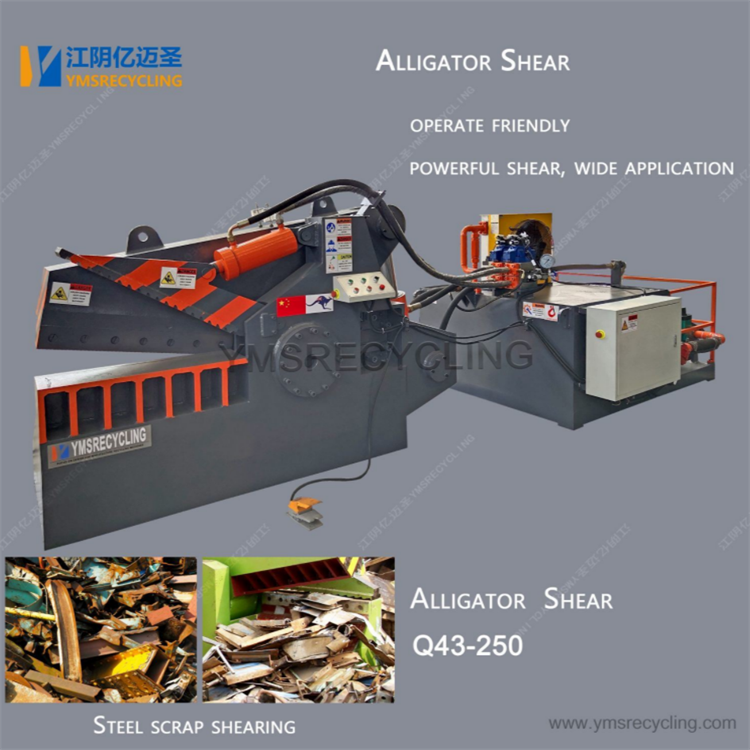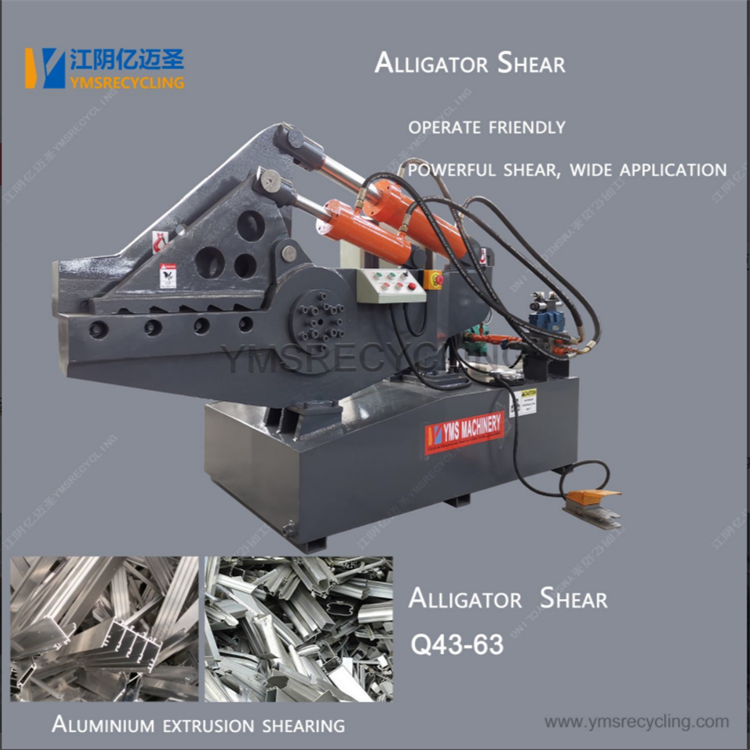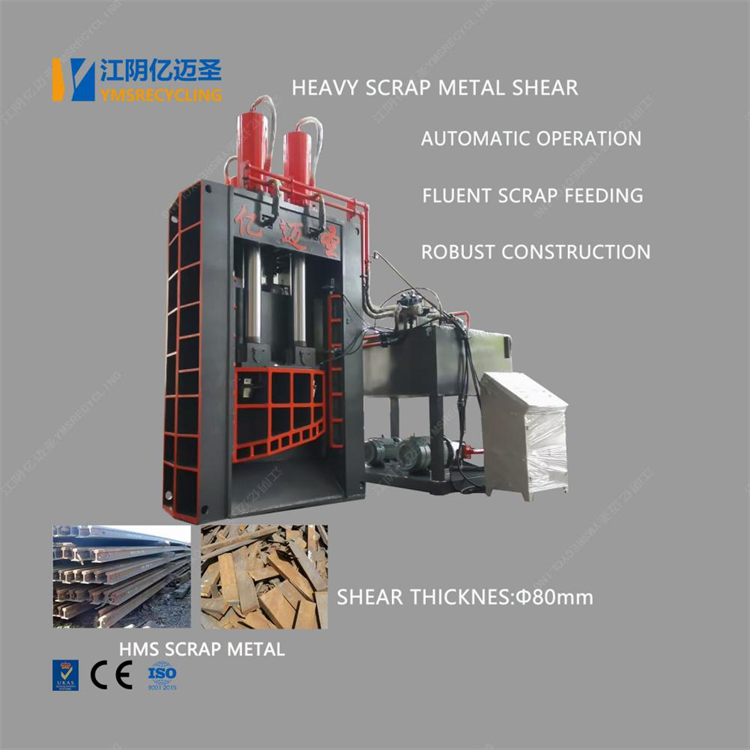The Y83-315 vertical copper scrap briquetting machine plays a vital role in the metal recycling industry. Its efficient briquetting capacity can convert bulk copper scrap into briquettes with higher density and smaller volume, thus facilitating Storage, transportation and subsequent processing. Briquetting efficiency, as one of the important indicators to measure the performance of the equipment, will inevitably be affected by factors such as raw material humidity and particle size.
The humidity of raw materials is one of the key factors affecting the efficiency of briquetting. Copper scraps often contain a certain amount of moisture during processing, and differences in humidity will directly affect the fluidity and compressibility of copper scraps. When the humidity of the raw material is too high, adhesion is easily formed between copper scraps, which makes it difficult to form a tight briquetting structure during the briquetting process, thus reducing the briquetting efficiency. High humidity may also cause moisture damage to the hydraulic system, electrical system and other components inside the briquetting machine, further affecting the stability of the equipment and briquetting efficiency.
In order to reduce the impact of humidity on briquetting efficiency, users should perform necessary drying of raw materials before using the Y83-315 vertical copper chip briquetting machine. This can be achieved by natural drying, hot air drying or mechanical drying to reduce the humidity of the copper chips. The equipment itself is also designed with corresponding humidity detection devices and control systems, which can monitor the humidity of raw materials in real time during the briquetting process, and automatically adjust briquetting parameters as needed to ensure the stability and high efficiency of briquetting efficiency.
The particle size of raw materials is also one of the important factors affecting the efficiency of briquetting. The particle size of copper scraps will directly affect its filling density and compression ratio during the briquetting process. Copper scraps with larger particle sizes can easily form voids during the briquetting process, resulting in a reduction in briquetting density and thus lower briquetting efficiency. Although the filling density of copper chips with smaller particle size is higher, an excessive compression ratio may increase the energy consumption and wear of the equipment, which is also not conducive to improving the briquetting efficiency.
In order to optimize the impact of raw material particle size on briquetting efficiency, users should screen the raw materials before using the Y83-315 vertical copper chip briquetting machine to remove excessively large or small particles and retain copper chips of moderate particle size. The equipment itself is also designed with a flexible feeding system and briquetting mold, which can automatically adjust the feeding speed and briquetting pressure according to the different particle sizes of the raw materials to ensure the maximum briquetting efficiency. The steps of screening processing usually include the following aspects: selecting appropriate screens, preparing screening equipment, performing screening operations, collecting and processing screened copper scraps.
The briquetting efficiency of the Y83-315 vertical copper chip briquetting machine is indeed affected by the humidity and particle size of the raw materials. Through reasonable raw material handling, equipment adjustment, maintenance and other measures, the adverse effects of these influencing factors on the briquetting efficiency can be minimized, thereby ensuring the stable and efficient operation of the equipment. The equipment itself is also designed with advanced control systems and fault diagnosis systems, which can monitor the operating status and fault information of the equipment in real time, providing users with timely and effective technical support and service guarantees.
